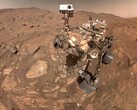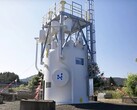The space race has always involved computing, but now everything is much more complex than it was a few decades ago. This time, a name like Red Hat is involved. Together with Axiom Space, the popular American software company that has been providing open-source solutions to enterprise customers for over three decades has deployed the Red Hat Device Edge-based AxDCU-1 prototype on the International Space Station.
The goal of this test run is to prove that real-time processing of data can be done in space, thus speeding up complex scientific research tasks performed on the ISS. Until now, the data acquired was sent to Earth for analysis. The AxDCU-1 is being used to process the data onboard the space station, only transmitting the final results to Earth.
The aforementioned Red Hat Device Edge platform was specifically designed to deliver the best results when operating in environments with limited resources. In the case of deployments to space, the limited power isn't the only constraint, since the bandwidth available is also very low compared to what's available for labs located on our planet. Red Hat Device Edge is based on the company's MicroShift, which is a lightweight Kubernetes distribution optimized for such tasks.
Now deployed 400 kilometers above and orbiting the Earth in just 90 minutes, this solution is a first step in a long road that has already been planned. Axiom Space is currently in the process of developing its first commercial space station, which will possess far more capable data processing abilities than the ISS can provide at this time.
However, Tony James, chief architect of science and space at Red Hat, told Data Center Knowledge that Earth applications are also in the cards. "From improving the reliability of critical infrastructure to advancing autonomous systems and edge AI in remote or resource-constrained regions, this research directly supports missions to improve quality of life on Earth," he said.

























